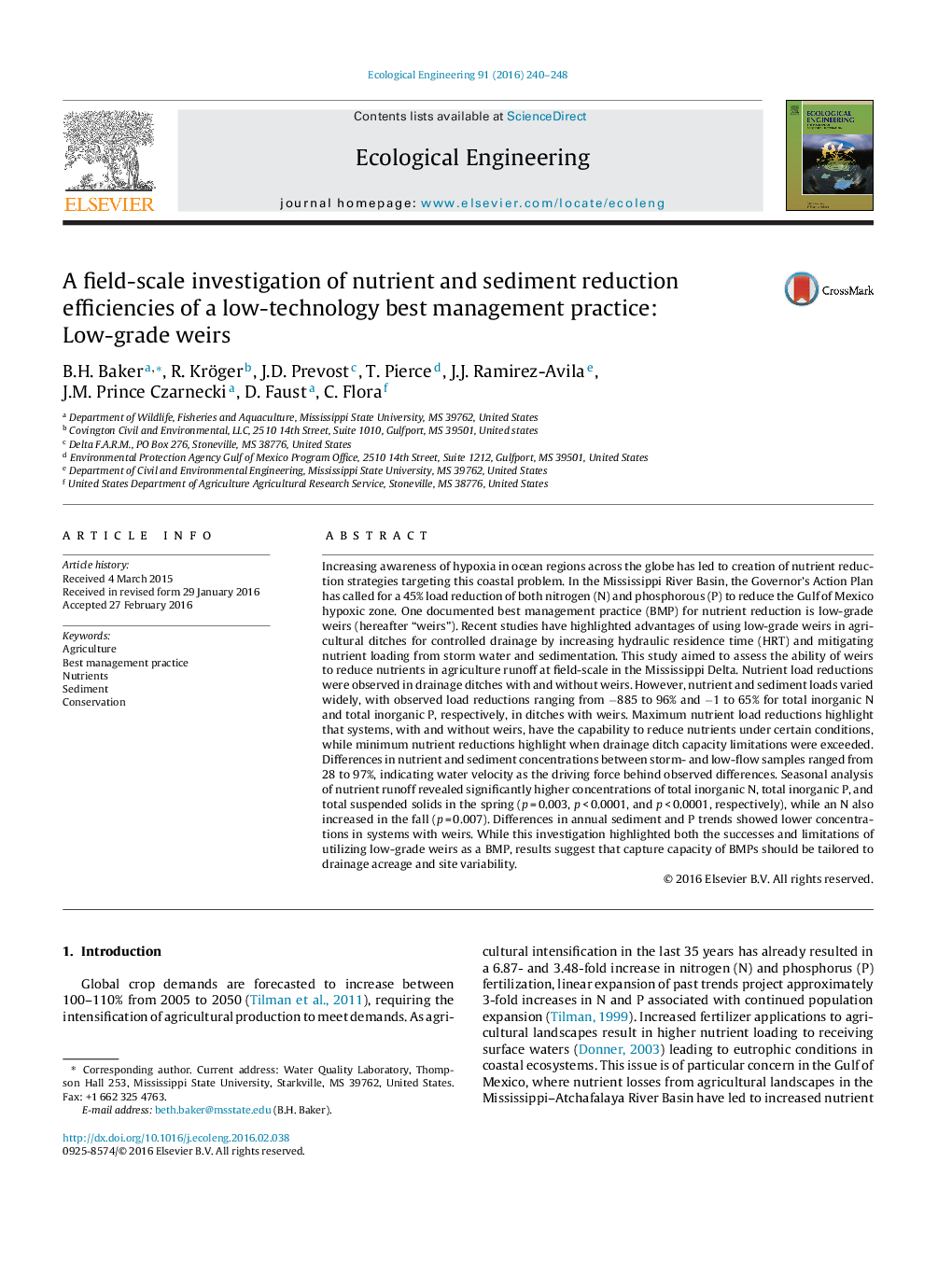| Article ID | Journal | Published Year | Pages | File Type |
|---|---|---|---|---|
| 6301319 | Ecological Engineering | 2016 | 9 Pages |
Abstract
Increasing awareness of hypoxia in ocean regions across the globe has led to creation of nutrient reduction strategies targeting this coastal problem. In the Mississippi River Basin, the Governor's Action Plan has called for a 45% load reduction of both nitrogen (N) and phosphorous (P) to reduce the Gulf of Mexico hypoxic zone. One documented best management practice (BMP) for nutrient reduction is low-grade weirs (hereafter “weirs”). Recent studies have highlighted advantages of using low-grade weirs in agricultural ditches for controlled drainage by increasing hydraulic residence time (HRT) and mitigating nutrient loading from storm water and sedimentation. This study aimed to assess the ability of weirs to reduce nutrients in agriculture runoff at field-scale in the Mississippi Delta. Nutrient load reductions were observed in drainage ditches with and without weirs. However, nutrient and sediment loads varied widely, with observed load reductions ranging from â885 to 96% and â1 to 65% for total inorganic N and total inorganic P, respectively, in ditches with weirs. Maximum nutrient load reductions highlight that systems, with and without weirs, have the capability to reduce nutrients under certain conditions, while minimum nutrient reductions highlight when drainage ditch capacity limitations were exceeded. Differences in nutrient and sediment concentrations between storm- and low-flow samples ranged from 28 to 97%, indicating water velocity as the driving force behind observed differences. Seasonal analysis of nutrient runoff revealed significantly higher concentrations of total inorganic N, total inorganic P, and total suspended solids in the spring (p = 0.003, p < 0.0001, and p < 0.0001, respectively), while an N also increased in the fall (p = 0.007). Differences in annual sediment and P trends showed lower concentrations in systems with weirs. While this investigation highlighted both the successes and limitations of utilizing low-grade weirs as a BMP, results suggest that capture capacity of BMPs should be tailored to drainage acreage and site variability.
Related Topics
Life Sciences
Agricultural and Biological Sciences
Ecology, Evolution, Behavior and Systematics
Authors
B.H. Baker, R. Kröger, J.D. Prevost, T. Pierce, J.J. Ramirez-Avila, J.M. Prince Czarnecki, D. Faust, C. Flora,
